Abstract
The influences of low root temperature on soybeans (Glycine max [L.] Merr. cv. Wells) were studied by germinating and maintaining plants at root temperatures of 13 and 20 C through maturity. At 42 days from the beginning of imbibition, 13 and 20 C plants were switched to 20 and 13 C, respectively. Plants were harvested after 63 days. Control plants (13 C) did not nodulate, whereas those switched to 20 C did and at harvest had C2H2 reduction rates of 0.2 micromoles per minute per plant. Rates of C2H2 reduction decreased rapidly in plants switched from 20 to 13 C; however, after 2 days, rates recovered to original levels (0.8 micromoles per minute per plant) and then began a slow decline until harvest. Arrhenius plots of C2H2 reduction by whole plants indicated a large increase in the energy of activation below the inflection at 15 C. Highest C2H2 reduction rates (1.6 micromoles per minute per plant) were at 58 days for the 20 C control. Root respiration rates followed much the same pattern as C2H2 reduction in the 20 C control and transferred plants. At harvest, roots from 13 C-treated plants had the highest activities for malate dehydrogenase, glutamate oxaloacetate transaminase, and phosphoenolpyruvate carboxylase. Roots from transferred plants had intermediate activities and those from the 20 C treatment the lowest activities. Newly formed nodules from plants switched from 13 to 20 C had much higher glutamate dehydrogenase than glutamine synthetase activity.
Photosynthetic rates on a leaf area basis were about three times as high in the 20 C control as compared to 13 C control plants. Photosynthetic rates of plants switched from 20 to 13 C decreased to less than half the original rate within 2 days. Photosynthetic rates of plants switched from 13 to 20 C recovered to rates near those of the 20 C control plants within 2 weeks. All leaf enzymes assayed at harvest, with the exception of nitrate reductase, were highest in activity in the 20 C control plants.
Full text
PDF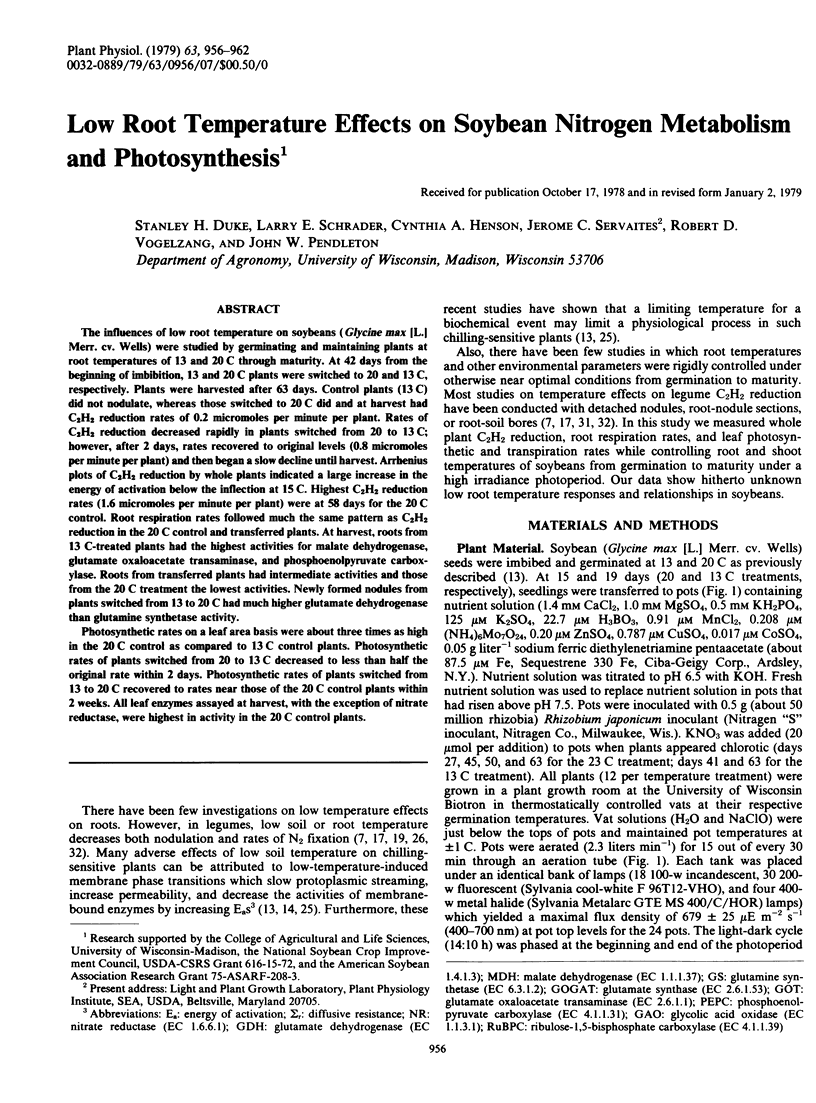
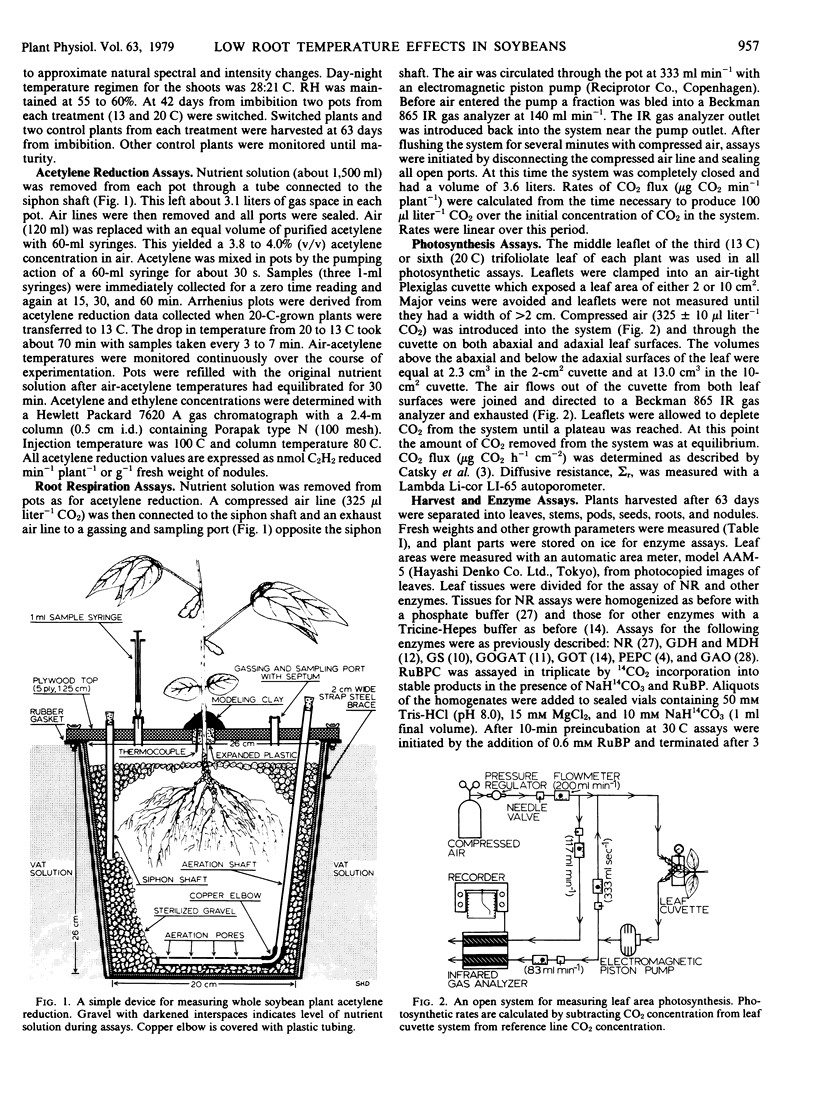
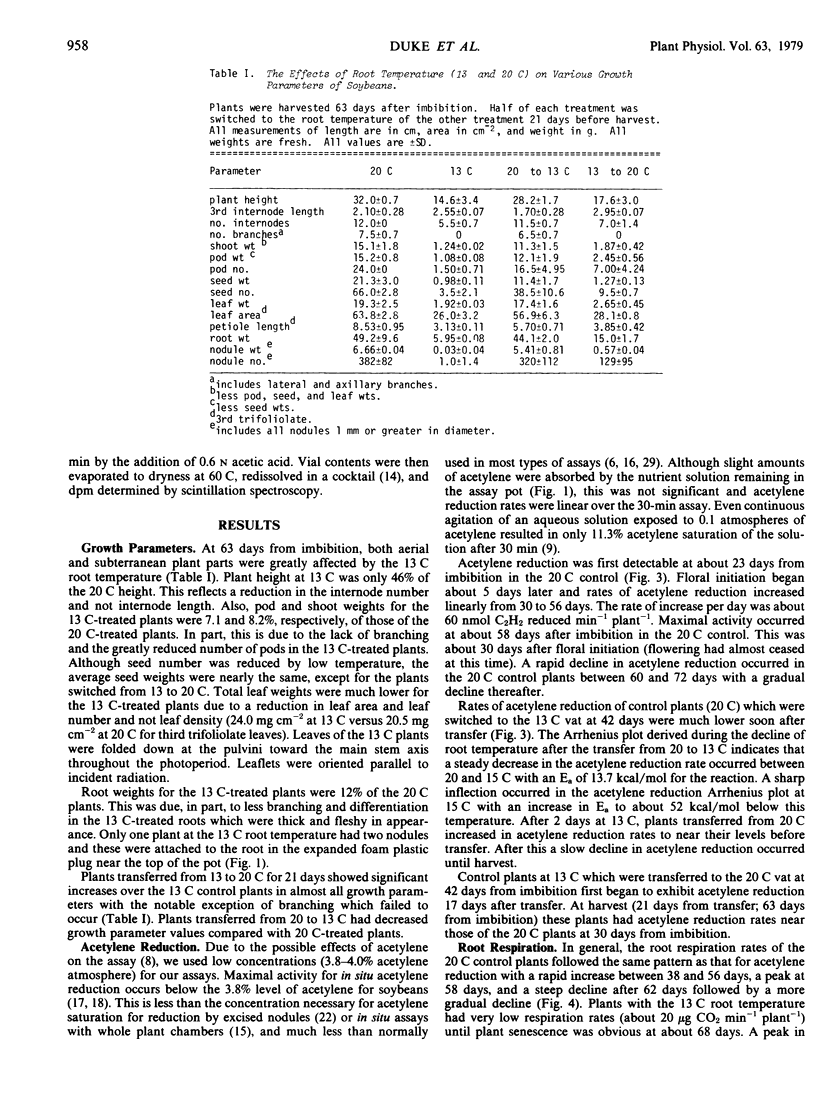
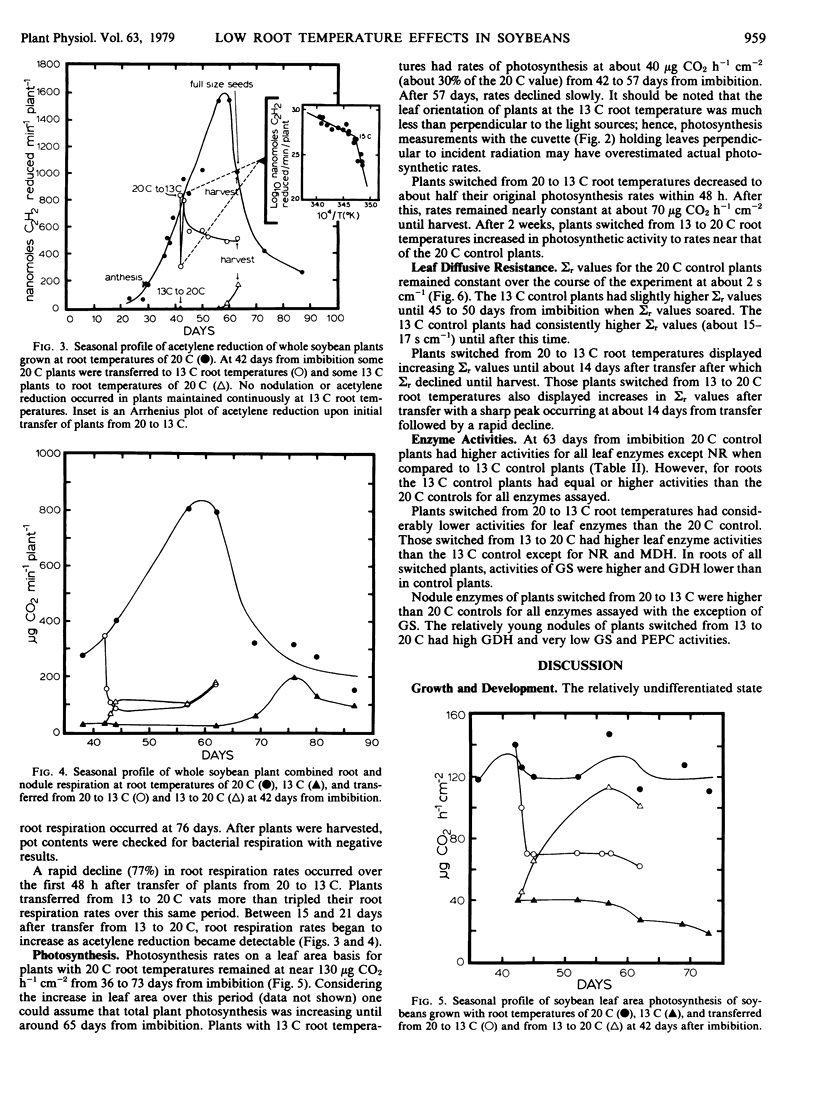
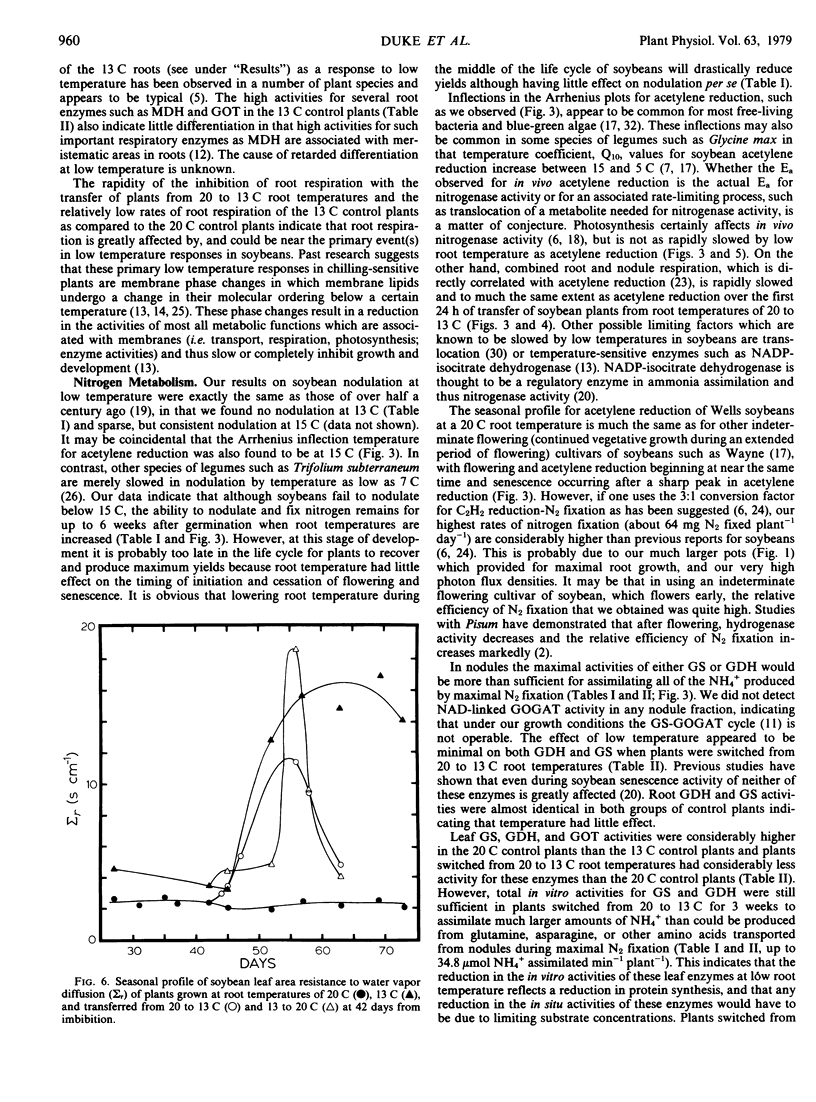
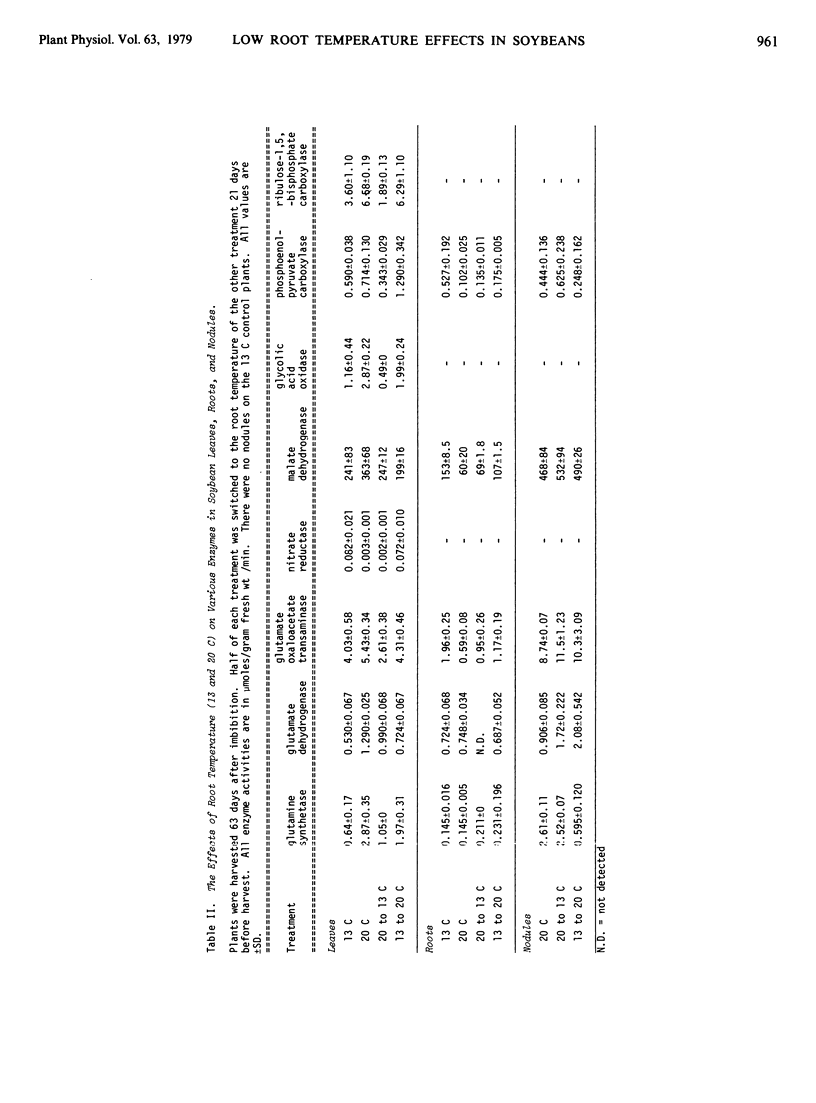
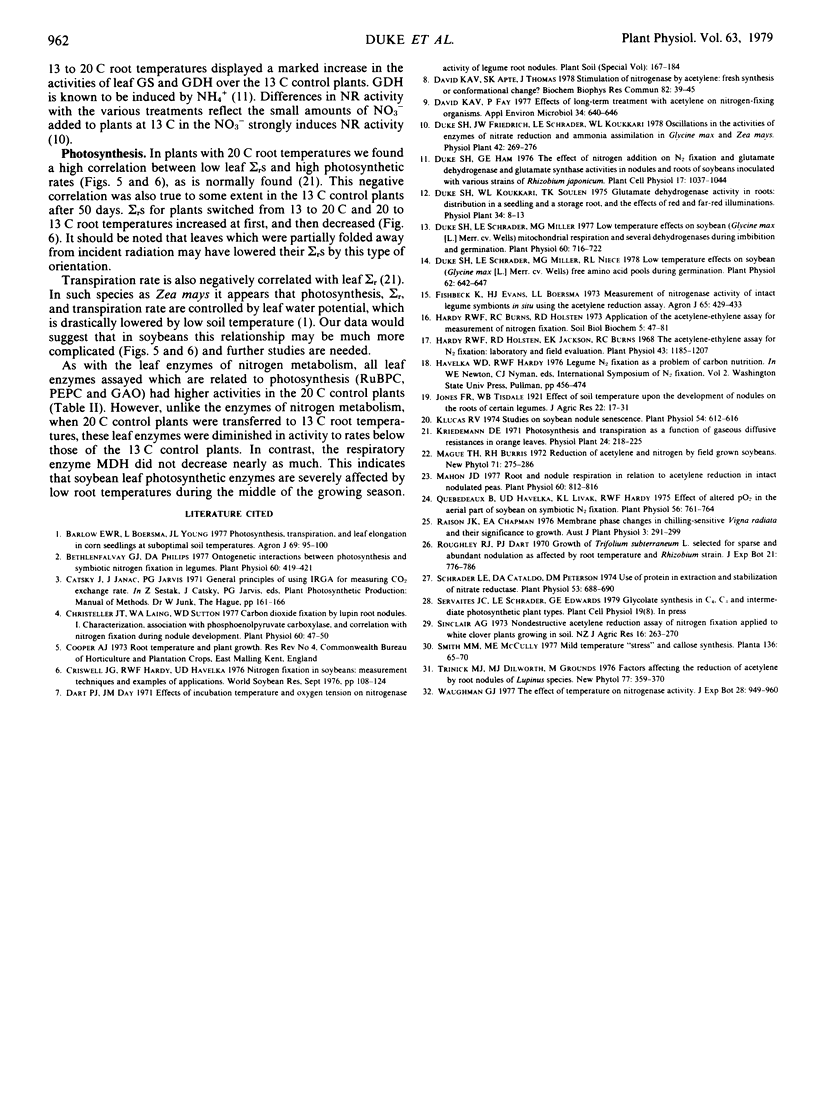
Selected References
These references are in PubMed. This may not be the complete list of references from this article.
- Bethlenfalvay G. J., Phillips D. A. Ontogenetic Interactions between Photosynthesis and Symbiotic Nitrogen Fixation in Legumes. Plant Physiol. 1977 Sep;60(3):419–421. doi: 10.1104/pp.60.3.419. [DOI] [PMC free article] [PubMed] [Google Scholar]
- Christeller J. T., Laing W. A., Sutton W. D. Carbon Dioxide Fixation by Lupin Root Nodules: I. Characterization, Association with Phosphoenolpyruvate Carboxylase, and Correlation with Nitrogen Fixation during Nodule Development. Plant Physiol. 1977 Jul;60(1):47–50. doi: 10.1104/pp.60.1.47. [DOI] [PMC free article] [PubMed] [Google Scholar]
- David K. A., Apte S. K., Thomas J. Stimulation of nitrogenase by acetylene: fresh synthesis or conformational chance? Biochem Biophys Res Commun. 1978 May 15;82(1):39–45. doi: 10.1016/0006-291x(78)90573-9. [DOI] [PubMed] [Google Scholar]
- David K. A., Fay P. Effects of long-term treatment with acetylene on nitrogen-fixing microorganisms. Appl Environ Microbiol. 1977 Dec;34(6):640–646. doi: 10.1128/aem.34.6.640-646.1977. [DOI] [PMC free article] [PubMed] [Google Scholar]
- Duke S. H., Schrader L. E., Miller M. G. Low Temperature Effects on Soybean (Glycine max [L.] Merr. cv. Wells) Free Amino Acid Pools during Germination. Plant Physiol. 1978 Oct;62(4):642–647. doi: 10.1104/pp.62.4.642. [DOI] [PMC free article] [PubMed] [Google Scholar]
- Duke S. H., Schrader L. E., Miller M. G. Low Temperature Effects on Soybean (Glycine max [L.] Merr. cv. Wells) Mitochondrial Respiration and Several Dehydrogenases during Imbibition and Germination. Plant Physiol. 1977 Nov;60(5):716–722. doi: 10.1104/pp.60.5.716. [DOI] [PMC free article] [PubMed] [Google Scholar]
- Hardy R. W., Holsten R. D., Jackson E. K., Burns R. C. The acetylene-ethylene assay for n(2) fixation: laboratory and field evaluation. Plant Physiol. 1968 Aug;43(8):1185–1207. doi: 10.1104/pp.43.8.1185. [DOI] [PMC free article] [PubMed] [Google Scholar]
- Klucas R. V. Studies on soybean nodule senescence. Plant Physiol. 1974 Oct;54(4):612–616. doi: 10.1104/pp.54.4.612. [DOI] [PMC free article] [PubMed] [Google Scholar]
- Mahon J. D. Root and nodule respiration in relation to acetylene reduction in intact nodulated peas. Plant Physiol. 1977 Dec;60(6):812–816. doi: 10.1104/pp.60.6.812. [DOI] [PMC free article] [PubMed] [Google Scholar]
- Quebedeaux B., Havelka U. D., Livak K. L., Hardy R. W. Effect of Altered pO(2) in the Aerial Part of Soybean on Symbiotic N(2) Fixation. Plant Physiol. 1975 Dec;56(6):761–764. doi: 10.1104/pp.56.6.761. [DOI] [PMC free article] [PubMed] [Google Scholar]
- Schrader L. E., Cataldo D. A., Peterson D. M. Use of protein in extraction and stabilization of nitrate reductase. Plant Physiol. 1974 May;53(5):688–690. doi: 10.1104/pp.53.5.688. [DOI] [PMC free article] [PubMed] [Google Scholar]


